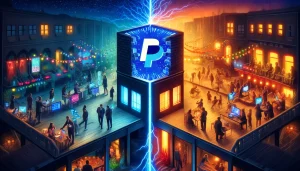Charities mainly rely on donations to provide the funding they need to continue their work. But what if people could also donate and receive a unique NFT, such as a digital artwork or a collectible, that in turn could be traded on an open market?
This is the concept behind non-fungible token fundraising by charities. An NFT is an asset that has a unique identity and can be identified, stored, and transferred without using a central registry. Unlike traditional crypto assets, each NFT has its own identity, allowing it to be differentiated from every other NFT. This provides key benefits for both donors and beneficiaries of charitable giving.
One firm pioneering NFTs for charities is Next Earth, which recently hosted the first Initial Tile Offering, or ITO, in which virtual land NFTs were sold.
What Donors Get Out of It
Donors can support charities more easily by receiving something of intrinsic value rather than just money: an NFT instead of cash or another donation form. Donors get something they want while supporting the cause: an NFT that represents something meaningful to them or their interests.
Donors may choose to hold onto their NFTs as a way of showing appreciation for a good cause while also benefiting from increased value over time – just like collectors do with physical artworks or sports cards.
Donors can also choose whether or not to sell their NFT at any point after making the donation. If they do decide to sell their NFT back into the secondary market, they will receive money from the sale which goes directly towards furthering their charitable mission.
What Charities Get Out of It
Charities also benefit via association with the growing NFT movement. NFTs are becoming increasingly popular with both donors and collectors, who view them as a new platform for creativity and expression. By accepting NFT-based contributions from donors, charities are joining an exclusive club that includes the world’s most prominent artists, musicians and game developers.
For example, Next Earth raised $1.3 million in its first few weeks, and the community voted on the allocation of the 10% charitable contribution, determining that 57% of the allocation would be given to The Ocean Cleanup, and the remainder to Amazon Watch.
How Non-Fungible Tokens Work
Non-fungible tokens (NFTs) are digital files that contain information about ownership rights within a blockchain network like Ethereum. This unique identifier allows NFT creators to identify individual tokens, track their movement throughout the network, and prove their existence and ownership at any given time through cryptography.
Once created, these tokens can be traded among users. When people donate cryptocurrency to support a cause using non-fungible tokens instead of cash or another traditional means of giving, the tokens become fungible assets once they enter into the hands of the intended beneficiary(s).
The non-fungible nature of these tokens ensures donors get something unique back in return for their donation.
What’s Next?
Non-fungible tokens are just one example of how blockchain technology is providing new ways for people around the world to give back and help make an impact on important issues facing society today.
Blockchain technology is changing how we think about trust and security online while creating opportunities for new forms of commerce and financial services that were previously unavailable.
Now imagine these same benefits being brought into daily life offline by leveraging blockchain technology as a tool for social good; Clearly, the future is bright for blockchain.





